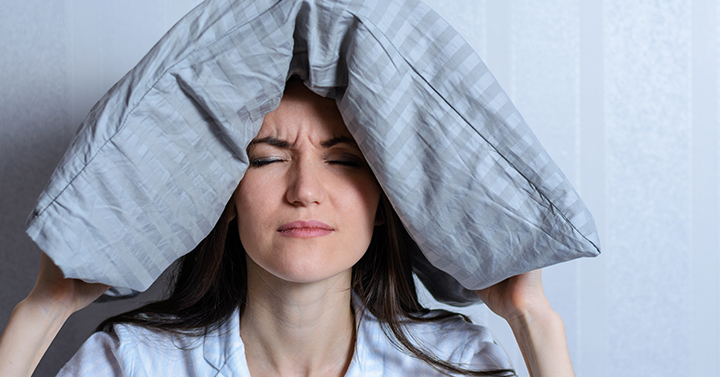The number of consumers suffering from sleeping disorders continues to grow, and quality sleep is a major issue for many Americans. In fact 75.0% of surveyed consumers indicate they have trouble falling asleep. Many use OTC sleep aids, combination OTC pain relievers and sleep aids, natural and herbal remedies, or sleep devices, such as smart watches and sleep tracking apps which posted 50% sales growth to help them sleep. These market segments however, are growing at very different rates. For example, sales of OTC sleep aids like Unisom, ZzzQuil, and Simply Sleep expanded by 3.4%. In contrast, sales of natural and herbal sleep aids that contain melatonin or valerian rose 18.0%, and sleep devices grew over 50.0%, as per Kline’s Sleep Aids study.
The sleep device category is the fastest-growing category within the overall sleeping aids market, growing more than 50% in 2018. Smartwatches dominate the segment’s sales. The top-selling smartwatch, Apple Watch, leads by a large margin compared to the next competitor. This category also includes light devices, such as Dodow, to relax, along with smart beds and sleep apps. Recently, consumers are also using natural sleep aids that contain ingredients such as melatonin, selenium, valerian, and ashwagandha, which also grew by double digits.
Other examples of sleep devices include the Neuroon Smart Sleep Mask (Inteliclinic), ActiGraph (ActiGraph), and Fatigue Science ReadiBand (Fatigue Science). While some of these devices promote better sleep, most are sleep monitoring devices that track sleep patterns. The Neuroon Smart Sleep Mask uses light therapy that simulates natural sleeping situations. The ActiGraph sleep monitoring smartwatch helps track a person’s sleep patterns; it also provides various tips on the importance of healthy sleep. Fatigue Science ReadiBand is a wristband that helps measure important sleep statistics. However, these devices are expensive compared to OTC sleep aids and are typically priced between $300 and $500. The growing popularity of fitness monitors and sleep monitors promotes sales of the category, as consumers tracking their sleep patterns realize that they are not getting enough sleep. These consumers move to sleep aid products, driving the category’s sales.
Restful sleep remains an elusive goal for many adults and, therefore, strong gains for sleep aids, including OTC sleep aids, natural sleep products, pain+sleep combination products, and sleep devices, are forecast over the next five years by Kline’s Sleep Aids: U.S. Market Analysis and Opportunities study. As part of this research, which was published in May 2019, Kline conducted a consumer attitudes and usage survey with 500 adult Americans who use sleep aids. Seventy-five percent of the sample report problems falling asleep, and this impacts many on a frequent basis, with 36% reporting daily sleeplessness. The effects of nighttime sleep problems are felt the next day, with 71% reporting daytime drowsiness, 61% being more irritable, and 49% having headaches. The impacts of one person’s sleeplessness can have ripple effects on others, with 47% reporting their sleep issues having an impact on other members their household, often a spouse or partner.
“With hectic, stressful everyday lives and increased stimulus from screens, American adults are having a hard time sleeping soundly,” comments Laura Mahecha, Industry Manager of Kline’s Healthcare Practice. “Other factors, such as age and medical conditions, also play a role in sleep disruption. However, consumers are increasingly aware of the importance of sufficient sleep on their overall health and wellness. Interestingly, the number of people who have trouble sleeping continues to far exceed the number who report taking a sleep aid, resulting in a category ripe for greater potential growth. Therefore, they are seeking safe, effective products that help them get to sleep and stay asleep.”
Some alarming statistics about sleep include:
• According to the National Center for Sleep Disorders Research at the National Institutes of Health, 30% to 40% of adults have some symptoms of insomnia within a given year, and 10% to 15% of adults claim to have chronic insomnia.
• People over the age of 65 years are 1.5 times more likely to suffer from insomnia compared to younger people.
• According to the American Sleep Association, approximately 40 million Americans, if not more, are afflicted by chronic long-term sleep disorders every year.
• The National Sleep Foundation estimates that 43.0% of Americans between the ages of 13 and 64 rarely or never get a good night’s sleep on weeknights, and 60% experience disruptions in their sleep every night or almost every night.
• Insomnia is considered a serious ailment, as it can lead to several other health-related problems such as depression and heart disease.
Understanding key trends, developments, business opportunities, new product activity, and consumer preferences in the rapidly changing and growing sleep aids market is crucial for marketers. Kline’s Sleep Aids: U.S. Market Analysis and Opportunities report provides a comprehensive analysis of the market for sleep aids in the United States, covering OTC sleep medicines, natural sleep aid products, and sleep aid devices while also including consumer research on attitudes, usage, and perceptions. To learn more about this study, contact us.

